Pulsara Around the World - May 2024
April Recap With 15 events under our belt, April was the busiest trade show month for our team...possibly ever! If you didn't get the chance to...
5 min read
 Team Pulsara
:
Jul 02, 2020
Team Pulsara
:
Jul 02, 2020
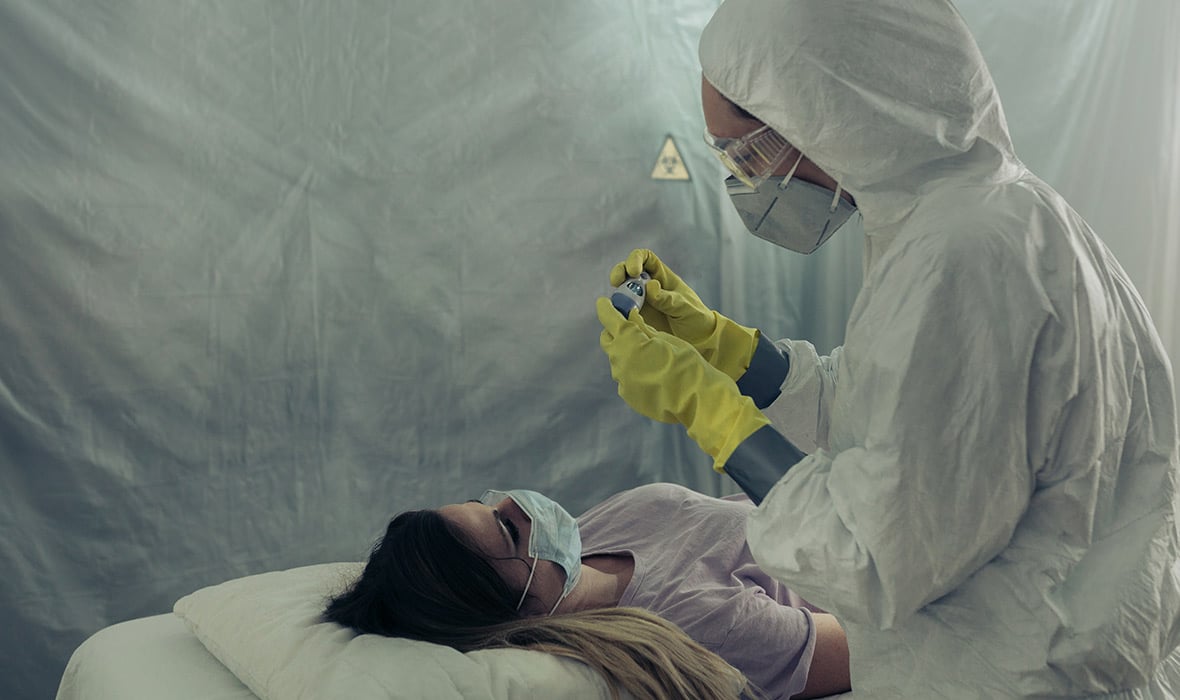
EDITOR'S NOTE: Special thanks to Courtney Chumley, FACPE, for writing today's blog post. You can connect with her on LinkedIn.
At Pulsara, we're committed to helping your organization recover from the initial COVID-19 wave, and prepare for current and future cases. One such way we're striving to equip care teams is by publishing thought leadership and real life examples of how other health systems have successfully managed COVID-19 and its widespread effects.
When COVID-19 hit the U.S., Pulsara client Cy-Fair Fire Department was prepared. They immediately put protocols in place to help mitigate the spread, which they are continuing to use and refine, and even put together a few informational videos to help other EMS agencies. Read on to learn how Cy-Fair was able to prepare for the first wave, and what they are currently doing to manage and mitigate the spread of COVID-19 by leveraging innovative technologies and systems.
On January 23rd, while the world was watching the evolution of the COVID-19 crisis overseas, the command staff at the Cy-Fair Fire Department met to plan their response. Headed up by Assistant Chief Justin Reed and Communications Chief Angela Burrer, the group began to discuss the threat they knew they were about to face.
With a service area covering 156 square miles and a population of approximately 475,000 people, the Cy-Fair team knew the potential impacts for the area were enormous. Clear communication was going to be important, they decided, so after that initial meeting, they chose to schedule daily morning video/phone briefings for all on-duty personnel and recorded them for those that were on a response.
As the virus slowly advanced towards the United States, Cy-Fair staff recognized the logistical concerns of providing appropriate clinical care, recognizing patients early, being mindful of overtriage, and managing personal protective equipment and force protection. They made it a priority to plan accordingly.
 In the early planning stages, the Cy-Fair Fire Department recognized that obtaining PPE through their regular vendors was going to become difficult. They used an “all hands-on approach” to obtain PPE as they could, utilizing any vendor, private citizen, or department member. Cy-Fair worked with their logistics division to purchase and secure items as they became available.
In the early planning stages, the Cy-Fair Fire Department recognized that obtaining PPE through their regular vendors was going to become difficult. They used an “all hands-on approach” to obtain PPE as they could, utilizing any vendor, private citizen, or department member. Cy-Fair worked with their logistics division to purchase and secure items as they became available.
With the Board of Directors’ financial support, RZ masks and eye protection were ordered and issued to all department personnel responding on calls early in the pandemic. Cy-Fair obtained additional PPE items for continued crew safety from resources in Texas, and around the nation. They felt it was crucial to provide clinicians with full PPE gear in every case where the patient was confirmed or suspected to have COVID-19. The Cough Droplet Simulation they developed as an educational tool for EMS agencies demonstrates why.
Cy-Fair’s command staff knew there would be a delicate balance between crew safety and the depletion of PPE gear, so they sought to develop a solution: the communication center would collect screening information as calls came through. The department then developed a tiered system to determine the level of PPE gear required for different scenarios. Based on the information collected by the communication center, they could then advise medics on how much PPE they needed to wear for each call.
Recognizing that the local hospital would also be facing similar challenges with their PPE availability, Cy-Fair Fire Department used Pulsara to pre-alert the hospital, notifying them when the patient was a potential COVID-19 positive case. This allowed the hospital to determine their team's PPE response to each patient ahead of time, allowing them to avoid wasting PPE on cases where it wasn't needed.
The Cy-Fair Fire Department operates an internationally Accredited Center of Excellence communications center, which receives all 911 calls in their response area. Utilizing the ProQA protocol system from Priority Dispatch Corporation, the department got support from medical directors to implement a two-phase screening process.
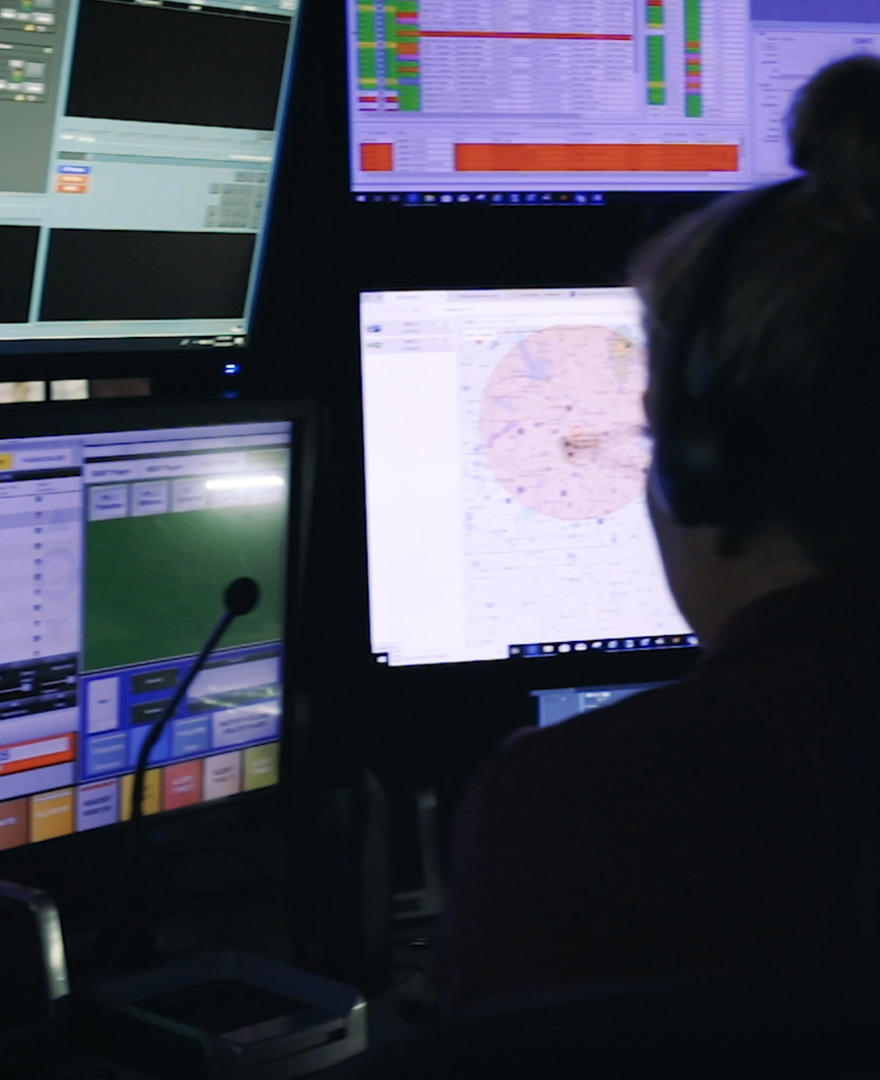 Phase one in the screening process is conducted by call-takers. After obtaining the caller location information, call-takers proceeded through their standard process of interrogation, identification, and notification. During the pre-arrival instructions, they added an additional step of using IAED’s Emerging Infectious Disease Surveillance (EIDS) Tool, which contains a list of possible signs and symptoms that might be observed or known about a given patient. If the patient meets the EIDS criteria, they are considered EIDS-positive. EIDS was initially implemented in surveillance mode only, implying no changes to response configurations. All caller and EIDS information is then transmitted automatically by MDC.
Phase one in the screening process is conducted by call-takers. After obtaining the caller location information, call-takers proceeded through their standard process of interrogation, identification, and notification. During the pre-arrival instructions, they added an additional step of using IAED’s Emerging Infectious Disease Surveillance (EIDS) Tool, which contains a list of possible signs and symptoms that might be observed or known about a given patient. If the patient meets the EIDS criteria, they are considered EIDS-positive. EIDS was initially implemented in surveillance mode only, implying no changes to response configurations. All caller and EIDS information is then transmitted automatically by MDC.
During the implementation phase, the department worked diligently with call-takers and crew members to better help everyone understand the progression of COVID-19. Since the coming pandemic would present scenarios the teams had never encountered before, the early implementation phase was a vital time to try to anticipate potential situations and identify answers to the team’s questions.
During phase one, they developed procedures: if an EIDS-positive case was identified, the responding crews would stage for additional instructions. At this point, the on-duty, highest-ranking EMS command staff would contact the caller over the phone. Once they verified the information obtained by the communications center, EMS command staff would first direct the patient to meet the EMS crew outside their house. If, for whatever reason, the patient wasn’t able to come outside, the command staff would then give the responding ambulance additional instructions on the appropriate PPE for the call.
In phase two, Cy-Fair added an experienced field paramedic to the communications center to monitor and assist with giving instructions to stable EIDS-positive patients. These Paramedics were trained to use ClearTriage to provide medical instructions and assist with keeping potential COVID-19 positive patients who were stable at home, reducing exposures. They then schedule regular follow-up phone calls between stay-at-home patients and the paramedic in the communications center. Paramedics monitored each patient’s condition and provided them with information on COVID-19 testing sites.
To continue to assist with PPE procurement and usage during phase two, the department decided to introduce two levels of PPE. They then developed procedures to determine when Level 1 PPE and when Level 2 PPE were required, based on both the EIDS information and the paramedic interrogations.
As mentioned previously, the initial approach to COVID-19 response had two phases to ensure that potentially infectious patients were not missed, beginning at the communications center level. Field operations also worked in conjunction with these phases. In phase one, all patients were given a surgical mask and the provider interacting with the patient was to don an N95 mask, goggles and gloves at a minimum. Also in phase one, a field screening process was implemented where the provider would perform a “stand-off” assessment from a distance of six feet at minimum. As the high-risk travel areas and symptoms expanded, so did questioning used during the assessment. The communications center also began requesting ambulatory patients to meet providers at the door of their residence. Adopting these guidelines aided in limiting exposure to providers.
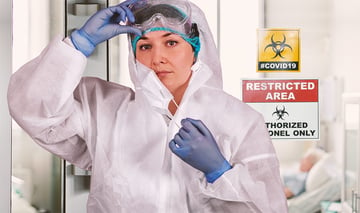 If the patient met the EIDS criteria when transporting, providers would don a Tyvek suit along with their N95, goggles, and gloves, activate the negative pressure air-exchanger in the patient compartment, and notify the receiving facility as early as possible. During transport, providers were to minimize contact with the patient and follow instructions from the receiving hospital on proper ingress to the facility. After the call was complete, responders were instructed to report to the administration building, where the unit would be decontaminated using a purpose-made spraying device. After the specified contact time of decontamination elapsed, the crew returned to service. If the patient presented with no EIDS positives, the crew could proceed with routine management and PPE—but continue with a high index of suspicion for communicable disease and utilize respiratory/droplet isolation procedures.
If the patient met the EIDS criteria when transporting, providers would don a Tyvek suit along with their N95, goggles, and gloves, activate the negative pressure air-exchanger in the patient compartment, and notify the receiving facility as early as possible. During transport, providers were to minimize contact with the patient and follow instructions from the receiving hospital on proper ingress to the facility. After the call was complete, responders were instructed to report to the administration building, where the unit would be decontaminated using a purpose-made spraying device. After the specified contact time of decontamination elapsed, the crew returned to service. If the patient presented with no EIDS positives, the crew could proceed with routine management and PPE—but continue with a high index of suspicion for communicable disease and utilize respiratory/droplet isolation procedures.
The department's main goal has been to reduce the spread of the disease by limiting exposure to personnel and citizens. This requires reviewing protocols and discussing the lessons they’ve learned with neighboring agencies. After a neighboring agency experienced a potential exposure from aerosolation using a ventilator, the department immediately developed training and issued directives requiring HEPA filter usage any time a BVM is used. The department protocols also evolved to utilizing metered dose inhalers for respiratory patients, removal of nitro spray, switching to nitro tablets, and requiring surgical masks for all patients receiving oxygen. Cy-Fair filmed the following video and shared it with EMS agencies across the country to help reduce field provider exposures.
Cy-Fair Fire Department knows there are continued challenges to come, from the procurement of needed supplies, to drug shortages, to community impact challenges. The department plans to review, implement, evolve, and communicate in order to combat this pandemic with the main goal of limiting exposure to personnel at the forefront of those strategy sessions.
To learn more about how EMS agencies across the U.S. are mitigating the effects of the pandemic, check out this webinar and summary on How EMS Leaders Are Using Mobile Technology to Manage the COVID-19 Crisis and Beyond.
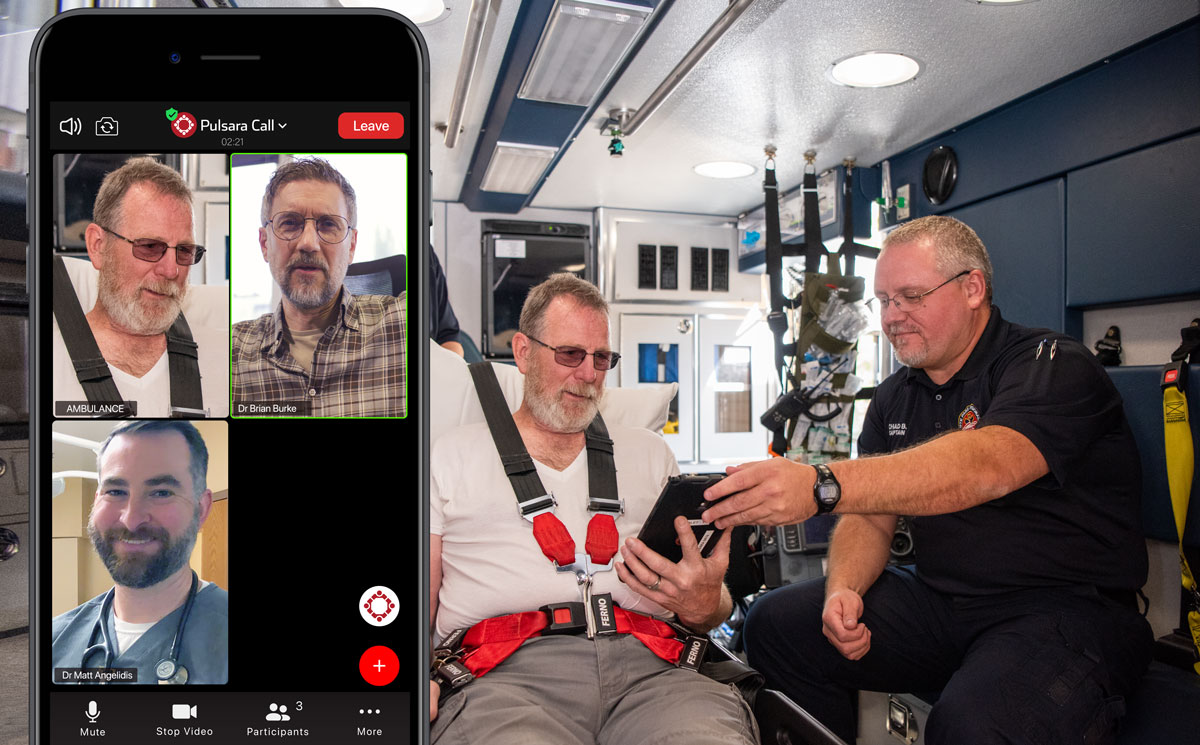
April Recap With 15 events under our belt, April was the busiest trade show month for our team...possibly ever! If you didn't get the chance to...
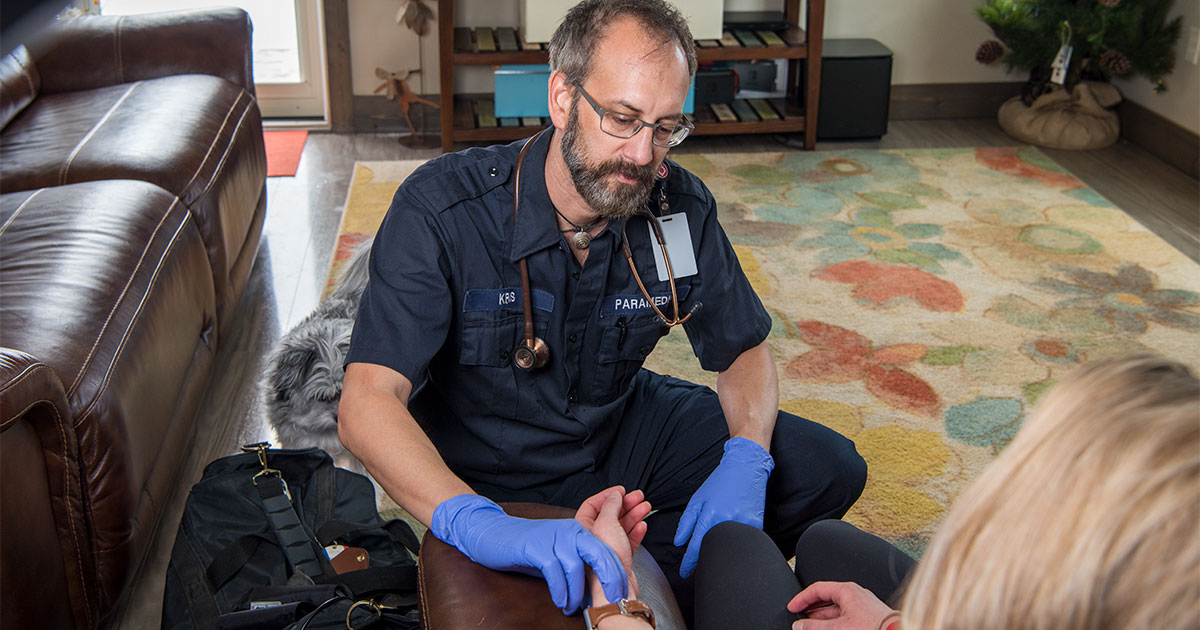
EDITOR'S NOTE: The following is an excerpt from an article by Larry Beresford, originally published on EMS World on April 3rd, 2024. Check out the...
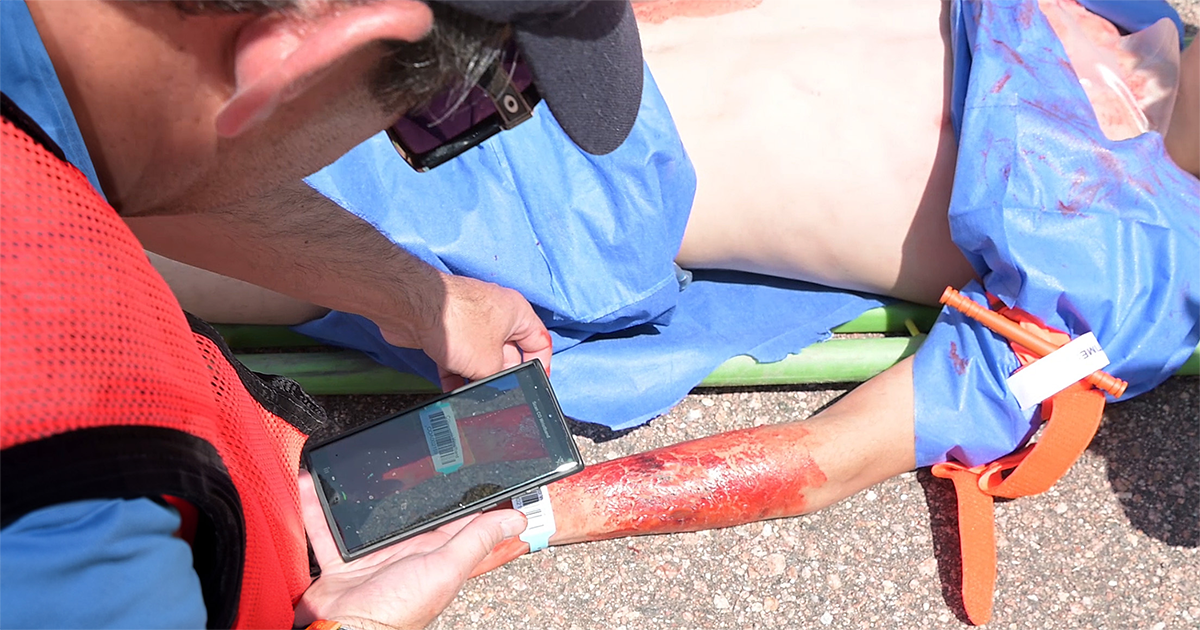
EDITOR'S NOTE: This article originally appeared on EMS1.com. Special thanks to our guest author, John Erich, for EMS1 BrandFocus Staff.__ No matter...